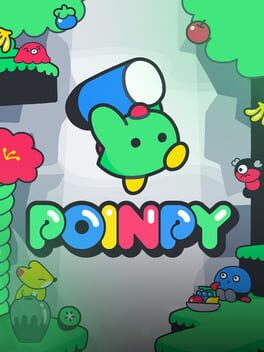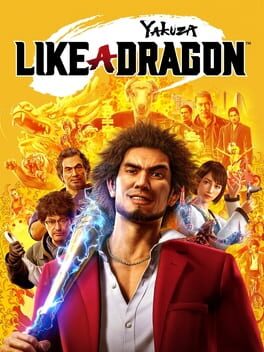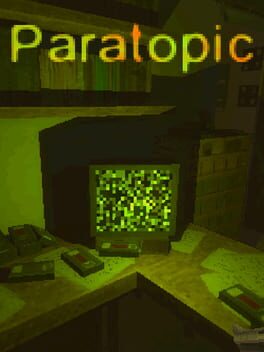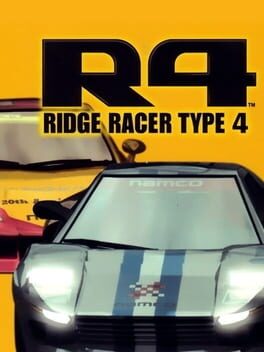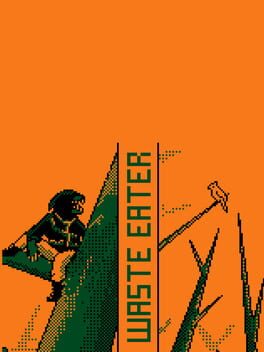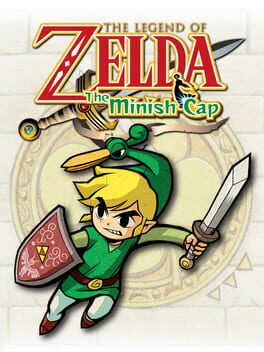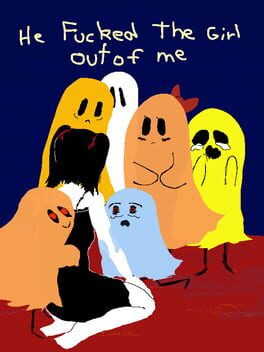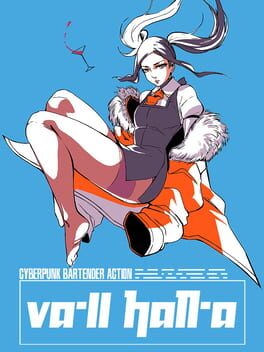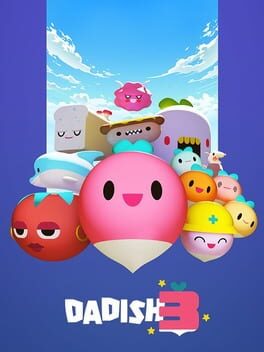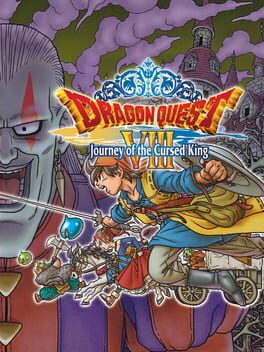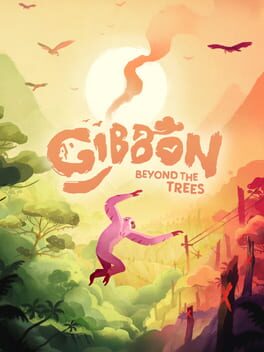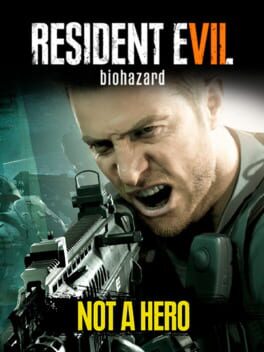done
2022
An excellent procedural platformer with cute style, Poinpy seems like an obvious next step for Ojiro Fumoto after Downwell. Compared to Downwell, it has an even greater emphasis on combos, providing players with a limited number of jumps that can be increased by bopping things on the head. It also has a clean cartoon style thanks to error403's art and Calum Bowen's soundtrack. That combination shoots Downwell through a Kirby filter, and that combination is right up my alley.
Downwell has a balance between persistent upgrades to styles and in-game upgrades and swapping that adds some electric variety to runs. Poinpy leans into persistent upgrades, which lends to a sense of progression between runs. By the end, I had enough jumps banked and control over what appeared in levels to hit a combo that took me from the start to the endgame in one glorious shot. But I would have liked more of a balance between the two approaches, as there's not much that alters a run through Poinpy once it starts.
Also, I loved the ending sequence. It's very much worth it to play this one all the way through.
Downwell has a balance between persistent upgrades to styles and in-game upgrades and swapping that adds some electric variety to runs. Poinpy leans into persistent upgrades, which lends to a sense of progression between runs. By the end, I had enough jumps banked and control over what appeared in levels to hit a combo that took me from the start to the endgame in one glorious shot. But I would have liked more of a balance between the two approaches, as there's not much that alters a run through Poinpy once it starts.
Also, I loved the ending sequence. It's very much worth it to play this one all the way through.
Ichiban Kasuga is a lovable fool with a heart of gold from start to finish. He's a great protagonist who makes friends quickly and treasures each one. The switch from brawler to turn-based party combat emphasizes that quality in an inspired use of videogame mechanics. It's a good representation of the direction of the Yakuza series since 4, which has been more about overcoming obstacles together than it is about a single hero.
However, there are some qualities that still need some work. I would have liked substories to grant XP in addition to their other rewards and the game could do more to give a spotlight to its own job system. As it went for me, there was also some repetition and lost hours to some unlucky dungeon deaths. That unfortunately distracted from the story and its characters, which are ultimately the bigger draw than the combat. All the same, Like A Dragon has some of the most lovable characters in videogames and it gave me plenty of time with them. Here's to the friends we made along the way!
However, there are some qualities that still need some work. I would have liked substories to grant XP in addition to their other rewards and the game could do more to give a spotlight to its own job system. As it went for me, there was also some repetition and lost hours to some unlucky dungeon deaths. That unfortunately distracted from the story and its characters, which are ultimately the bigger draw than the combat. All the same, Like A Dragon has some of the most lovable characters in videogames and it gave me plenty of time with them. Here's to the friends we made along the way!
This is a rare thing: a 3D platformer that feels original. That isn't to say that it doesn't come with a bunch of influences, but the results are more than the sum of their parts. When Evening Star's ideas shine through, as in how complimentary the sound effects are to the soundtrack, or the abundant opportunities to rocket Penny forward and rapidly roll through levels, the game shines. Unfortunately, Evening Star hasn't quite figured out how to make failures fun, a problem exacerbated by glitches. I have a catalog of them after playing the game. It often felt like Penny and the levels tripped over themselves. Fortunately, the game would soon get back up, something charming would happen, and I would be back to enjoying myself.
edit: I've put up a full length review at Gamers with Glasses: https://www.gamerswithglasses.com/reviews/pennys-big-breakaway
edit: I've put up a full length review at Gamers with Glasses: https://www.gamerswithglasses.com/reviews/pennys-big-breakaway
2018
More than a few things about Paratopic stand out. I'm always interested in games that deploy jump cuts, and this one matches them with Twin-Peaks-Red-Room style audio, deliciously grimy textures and lighting, and quality sound and music design to good effect. The range of interactivity is also above average for a game of this style and length, with dialogue, driving, a camera, a gun, and VHS tapes all situationally deployed. Some dialogue is hit-and-miss, and some cuts are questionable, but the game largely comes together and builds to a climax at the end. While I think there are hints that the game involves three characters (as described on its itch.io storefront page) with three partial perspectives on its plot and settings, there's room for some deeper characterization. On the one hand, I like how the audio, visuals, and cutting technique conveys a kind of depersonalizing effect. There's not a lot of comprehension or agency available to players or characters. And little slices of characterization are present in dialog options, possible actions, and differences in setting. Even more so than the plot, however, I think I'd point to character as the component where the incompleteness of perspectives masks a little too much. It starts to come off as convenience to the writer/director rather than something necessary for the themes and atmosphere of the game. Altogether, there's plenty here. I'd certainly recommend setting 35-50 mins apart to play through Paratopic - its designers show a thoughtfulness about the medium that's rare, at least as that is expressed by playing the game. It's not to be slept on fans of atmospheric horror.
1998
From the CG intro to the bright yellow menus to Kohta Takahashi's outstanding OST, this is a time capsule of the aesthetics of 1998. The racing is classic arcade-style and, in my opinion, that makes manual transmission the only option. Courses and events are varied, for what's here, and the GP story frames are fun. The downsides are the small number of tracks and events. With the exception of some story, players will have seen most of what there is to see after a single trip through GP mode. Then again, what's here can be replayed endlessly. This game is so polished, and its presentation is so pleasant, that I know I'll keep coming back.
2023
An imaginative short story, well-told with minimal art, animations, and just a few dialogue choices. Reminiscent of Can Androids Pray, but I prefer the ideas and story in this one. I'll chalk that up to the Le Guin influence, as referenced in the end credits. It only takes a few minutes to experience and uses its time well to consider mortality, community, and the desire to make a better world possible.
The brilliant art and interactions between level, item, and boss design invited me in to Minish Cap. I think those qualities set up my imagination to fill in the game's size-changing premise. I also appreciated the playfulness and subversion that the all-star team behind this one brought to the series. The tone was set with the first major item in the first dungeon and, by the penultimate dungeon, developed into a rich play on expectations.I would have liked even more of that, as I also think that development team was sometimes at pains to include aspects from past games. Sometimes this results in homage, but other times I felt that it cut against the more contemporary and textbook level design of its overworld and dungeons. By the time I was about three-quarters of the way in, however, most of that had fallen away in the face of those excellent dungeons and what, in my opinion, are some of the finest bosses in any Zelda game.
2009
A poorly-designed puzzle game, although calling it a "puzzle game" almost feels like a misidentification. I would have much preferred for Echoshift to be a puzzle game. Instead, it's more like a platformer with poor, slow, unresponsive controls and harsh timers. Managing multiple timed elements against the clock with an avatar that feels as though it's moving through molasses is not fun. Navigating stairs is an awful experience - they feel like a throwback to old Castlevania stairs, and not in a good way. Some of the spacing of platform elements also feels off, like trampolines that toss your avatar just a shade farther than the start of some stairs, requiring a turn, half-step back, and then climb.
I could still deal with all of that, except that the game requires optimization to unlock further levels and progress. At a certain, relatively early point, the full three stars are demanded. These levels and gameplay weren't much fun the first few times that it took me to finish them, even with a less-than-ideal two star rating, and I'm not going back to wrestle with these controls for all three.
I could still deal with all of that, except that the game requires optimization to unlock further levels and progress. At a certain, relatively early point, the full three stars are demanded. These levels and gameplay weren't much fun the first few times that it took me to finish them, even with a less-than-ideal two star rating, and I'm not going back to wrestle with these controls for all three.
I can see why this one is regarded as such a disappointment. Level design is rote and it feels as though there are only pro forma gestures at dead ends that are off the main path. The plot is meager and derivative, with comically bad pacing that backloads exposition into the final scenes of the last chapter. That said, I enjoyed the Punch-Out-in-space-jail combat and the gore is great. Unfortunately, even the blood and guts lose their glossy luster with repetition.
This game deftly handles some very challenging subject material. Challenging for me to read and play, anyway - as a semi-autobiographical game, it is a brave statement about the experience and consequences of being a sex worker. There's plenty of media out there about trauma, but few pieces offer such an insightful picture. Doing so using the tools available on a Game Boy Color is remarkable.
While Va11-Hall-A emphasizes style, it's so much style over substance. As a visual novel, this is a game in a genre that lives and dies by writing. Unfortunately, my diagnosis for this one is a case of internet poisoning, in which a couple game developers hung out on fora and let that guide style, character, and humor.
Even so, there are still some interesting things about it - the insistence on setting up the jukebox before each shift, the main character's narrative arc that's centered around grief and fear, the way the world's events unfold around the bar rather than within it - so I would say it accomplishes some of what it means to in terms of storytelling
The bartender mechanic is one of the weakest of the genre, though, and it doesn't stand up particularly well next to the convenient puzzling of Coffee Talk or the more active and varied effects that drinks have in Red Strings Club. Honestly, the game was a little more fun on the days where I let the main character be "distracted," which meant that I at least had to remember drink orders myself. There are a few moments in each shift where there's some variability in terms of what you can serve, but it doesn't lead to much more than a small difference in dialogue or, at most, the appearance of an optional character.
Even so, there are still some interesting things about it - the insistence on setting up the jukebox before each shift, the main character's narrative arc that's centered around grief and fear, the way the world's events unfold around the bar rather than within it - so I would say it accomplishes some of what it means to in terms of storytelling
The bartender mechanic is one of the weakest of the genre, though, and it doesn't stand up particularly well next to the convenient puzzling of Coffee Talk or the more active and varied effects that drinks have in Red Strings Club. Honestly, the game was a little more fun on the days where I let the main character be "distracted," which meant that I at least had to remember drink orders myself. There are a few moments in each shift where there's some variability in terms of what you can serve, but it doesn't lead to much more than a small difference in dialogue or, at most, the appearance of an optional character.
2022
As a sequel, this is more Dadish. Unfortunately, it's past its expiration date. I think this one may take inspiration from Donkey Kong Country in several wrong ways. There's a reliance on levels with companions, but they largely play like autoscrollers or otherwise involve clumsier controls than Dadish's usual platforming. The dialog is also off and I found a few scenes more spiteful than anything else. While Thomas K Young is clearly talented, he badly needs an editor and testers.
Playing this over the course of the last year and a half felt less like playing a season of a fantasy story and more like an entire series. In general, it was a well-paced one, too. The classic mechanics help out with that; whether I picked it up for a 15-minute session or a 2-hour one, it always felt like I made some progress. I'm even happy with how I was sidetracked for about ten hours near the end in the cause of expanding the party and gearing up for the finale.
I do feel that the dungeons are, for the most part, a little lackluster. There are only a handful that have much in the way of complexity or that feel more like places rather than monster pits. I would also have liked to see more in the way of animation and plot movement while progressing through the dungeons. Some interactions between monsters, something more than just having large models wandering back and forth, and a little more intra-party dialogue might have gone a long way.
Even so, I'm leaving this one with an understanding of what it is about Dragon Quest that's special. It has an atmosphere that comes from a sense of play, in which, even if things go as expected, there's a feeling that they went just right. Each member of the party has a satisfying story arc. Right up until the end of the game, there's always another destination and another journey. This entry, at least, feels like a welcoming, extended fantasy, all the way to to its ending and epilogue.
I do feel that the dungeons are, for the most part, a little lackluster. There are only a handful that have much in the way of complexity or that feel more like places rather than monster pits. I would also have liked to see more in the way of animation and plot movement while progressing through the dungeons. Some interactions between monsters, something more than just having large models wandering back and forth, and a little more intra-party dialogue might have gone a long way.
Even so, I'm leaving this one with an understanding of what it is about Dragon Quest that's special. It has an atmosphere that comes from a sense of play, in which, even if things go as expected, there's a feeling that they went just right. Each member of the party has a satisfying story arc. Right up until the end of the game, there's always another destination and another journey. This entry, at least, feels like a welcoming, extended fantasy, all the way to to its ending and epilogue.
A fun autorunner (autoswinger?) with colorful art, fluid animations, and a good system of movement based on swinging and sliding. The story, centered around habitat destruction and poaching, is decently told, too. With all that, I think that Gibbon: Beyond the Trees is well above-average for this style of game, raising the standard just a bit in some respects. The extra post-game mode is okay, but the way it opens movement up also unfortunately demonstrates its limitations of the forward momentum and control. The design of the main game works within those limitations, though, so it's not a big flaw.
Bold of Capcom to think that I wanted more of the worst setting from 7. Back to the Salt Mines! At least some of the new mechanics, in the form of contaminated air, darkness, and enemies that require a special ammo type add some spice. Speaking of spice, they sure left this DLC with a lot to do in terms of connecting to the main narrative frame.
